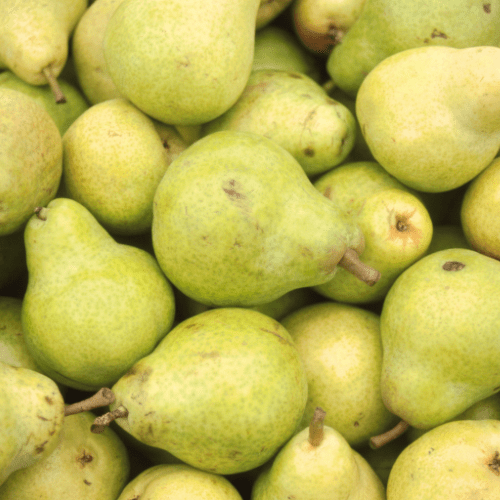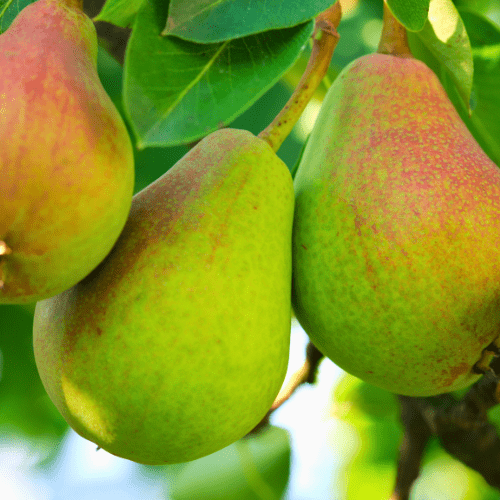Position
Plant your pear tree in full sun for the best fruit yield. They can tolerate some shade but will not fruit as much or grow as fast. They are easy to grow if you protect them from heavy wind and areas where frost lingers.
Size
Pear trees have more of a conical (narrow but tall) growth habit. At maturity, they reach up to 6 metres tall and 4 metres wide.
Soil Type
This tree can tolerate most soils but not heavy clay. A sandy loam soil is best as good drainage is important. Organic compost with soaked peat moss gives your pear tree a good start.
Watering
Water your tree every second day for a week after transplanting. After that, water it twice a week if it is in light loamy soil and once a week in heavy soil. Soak the entire root system deeply for about 40 to 50 minutes when watering.
Mulching
Add a thick layer of pine bark mulch, keeping it about 20 to 30 centimetres away from the tree trunk (any closer may cause excess moisture and damage the trunk). This will retain the moisture in the soil and will prevent weeds from taking over.
Fertilising
Don’t fertiliser at planting time, as it can burn the roots.
Use our slow-release nitrogen-rich fertiliser, like our all plant fertiliser Apply 1 teaspoon of our berry fertiliser every 4-5 months.
Pests and Diseases
Aphids, citrus psylla, red scale, citrus greening. Spraying regularly with Agricultural Neem Oil or Effective Microorganisms (EM Control ) will assist in either prevention or after the fact. If you already have aphids or mites, wash the tree with a harsh hosing, and when dry, spray with Neem oil or EM Control.
Practice good garden hygiene (remove fallen fruit and leaves).
Watch for root rot (if overwatered) and fungal infections during wet periods.
Harvesting
Pears ripen from the inside out. So, once it looks and feels completely ripe on the outside, it’s likely to be mushy and overripe in the centre. This means that you should pick them when they are still quite firm to the touch.






